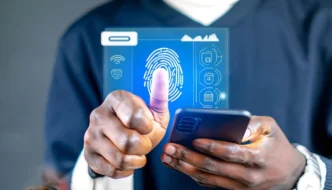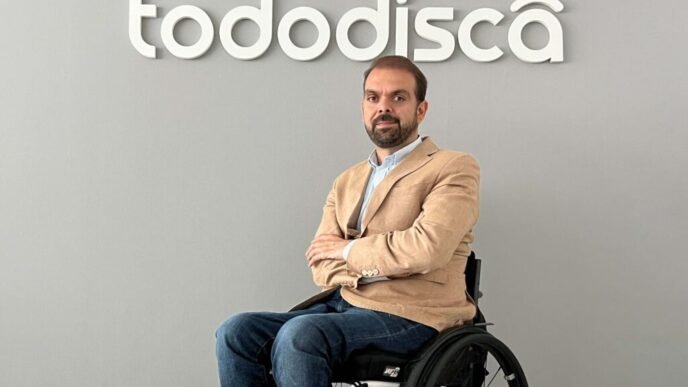In the digital age, our identity has become one of our most valuable assets — and one of the most vulnerable. From social media logins to online banking, we’re constantly proving who we are in a world where identity theft and data breaches are growing concerns.
But a new era of technology is emerging; one that merges blockchain and biometrics to create a future where your identity is secure, decentralized, and truly yours.
The Digital Identity Problem
Every time you create an account, sign into an app, or verify your details online, your personal data gets stored in centralized databases — a prime target for hackers.
In 2024 alone, global identity theft cases surged to record levels, with billions of dollars lost to scams and breaches. Passwords and two-factor authentication (2FA) are no longer enough to protect users from advanced cyber threats.
That’s where blockchain and biometric technology come in — together, they’re redefining how identity works on the internet.
How Blockchain Reinvents Identity Management
Blockchain — the same technology behind Bitcoin and Ethereum — isn’t just for cryptocurrency. It’s a distributed ledger that records information securely and transparently across a network of computers.
For identity, this means users no longer have to depend on centralized authorities (like Facebook or Google) to verify who they are. Instead, they can store their identity credentials on a decentralized blockchain network, where only they control access.
This concept is known as Self-Sovereign Identity (SSI) — a system that allows individuals to manage their digital identity independently.
Benefits include:
- Data Ownership: You control what data to share and with whom.
- Transparency: Every verification is logged and immutable.
- Security: No single point of failure means hackers can’t easily steal your information.
Companies like Microsoft’s Entra Verified ID and ID2020 are already pioneering blockchain-based identity solutions for individuals and businesses.
Biometrics: The Human Key to Security
While blockchain secures digital credentials, biometrics ensures only the rightful owner can access them.
Biometric verification uses unique human characteristics — fingerprints, facial features, iris scans, or even voice patterns — to confirm identity. Unlike passwords, these traits can’t be forgotten or stolen.
Apple’s Face ID, Google’s Android Biometric API, and Mastercard’s biometric payment cards are leading examples of how human features are becoming the ultimate authentication tool.
When combined with blockchain, biometrics creates an unbeatable security framework:
- Blockchain = Trustless verification
- Biometrics = Personal authentication
Together, they eliminate the need for traditional passwords and reduce the risk of identity theft.
Real-World Applications of Blockchain + Biometrics
This powerful combination is already transforming industries:
- Finance: Banks are using biometric blockchain systems to verify users securely without exposing sensitive information to hackers.
- Healthcare: Patients can store and control medical records on blockchain networks, accessing them via fingerprint or facial verification.
- Travel: Digital passports stored on blockchain could let travelers pass through airport checkpoints using only biometric scans.
- Voting: Some governments are testing blockchain-based voting systems that verify voters using fingerprints — eliminating fraud and ensuring transparency.
These innovations promise to make digital interactions safer and more efficient across the globe.
The Challenges Ahead
Of course, merging blockchain and biometrics isn’t without obstacles:
- Privacy Concerns: Storing biometric data must comply with strict regulations like GDPR.
- Scalability: Blockchain systems can still be slow for real-time verification.
- Adoption Barriers: Governments and organizations must align on global identity standards.
Experts suggest that hybrid models — combining blockchain, AI, and edge computing — will play a major role in overcoming these challenges.
The Future of Digital Identity
Looking ahead, our digital identity will likely become a universal passport — usable across countries, platforms, and services.
Instead of logging into websites with usernames and passwords, users will simply authenticate with their face or fingerprint, while blockchain verifies their credentials in the background.
This will make online experiences smoother, safer, and more trustworthy — protecting individuals’ privacy while giving businesses better tools to fight fraud.
Imagine a world where you can prove who you are — instantly, anywhere — without giving away your personal data. That’s the promise of blockchain-powered biometrics.
Final Thoughts
The fusion of blockchain and biometric security is shaping the future of digital identity — one where people truly own their information and control how it’s used.
As these technologies mature, they’ll redefine trust in the digital economy and pave the way for a more secure, user-centric internet.
To keep up with the latest in identity innovation, blockchain breakthroughs, and the evolving tech landscape, follow Forbes US, where technology meets trust, and the future takes shape.















